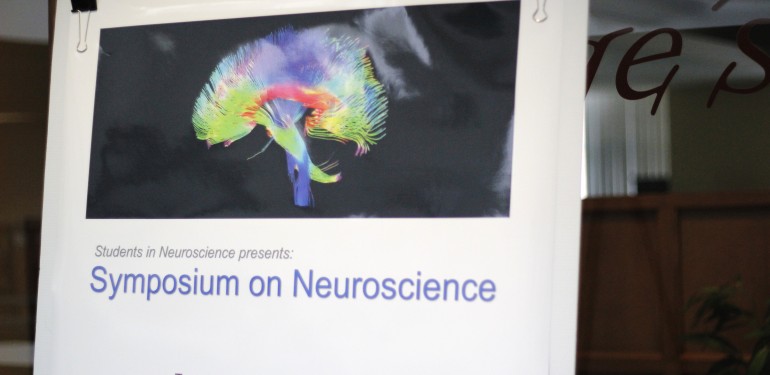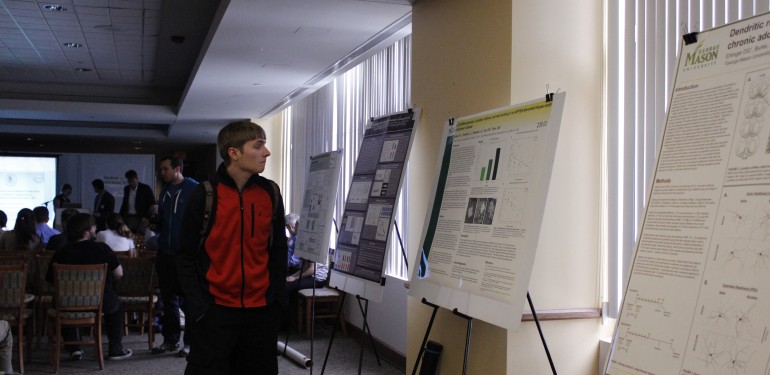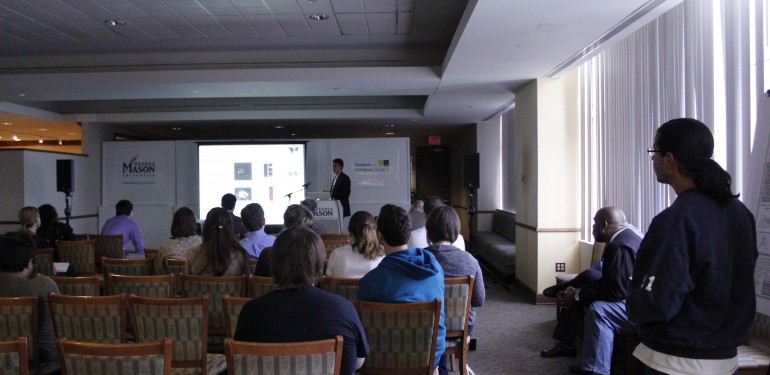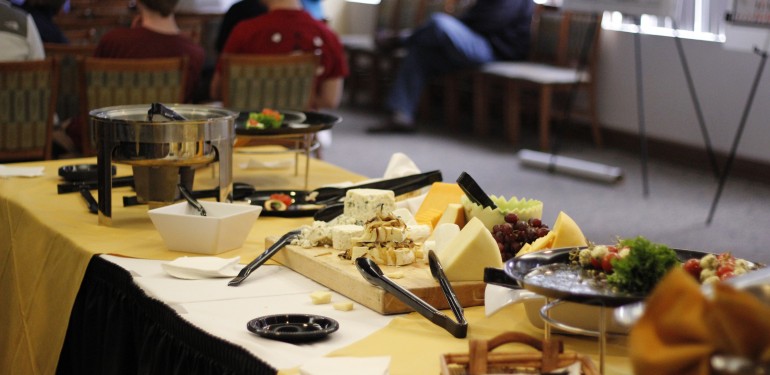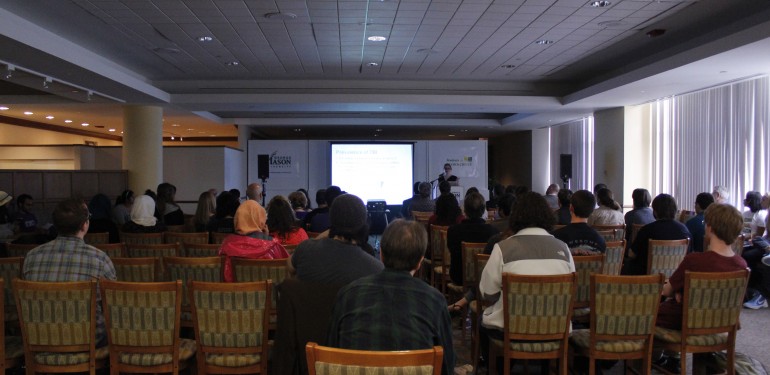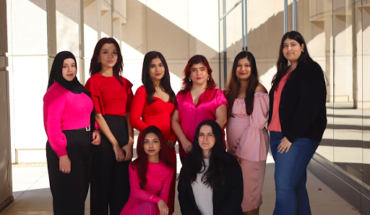Fourth Estate Online Sports Editor Kristi Anable
The first Symposium on Neuroscience took place on Tuesday, April 22 at George’s Restaurant on the third floor of the Johnson Center on the Fairfax campus of George Mason University.
The symposium was hosted by Students in Neuroscience (SiN), a student group created in 2002 with the purpose of advancing knowledge within the neurosciences through weekly discussions and social and academic events.
“SiN group is important because it allows us to get together and discuss neuroscience in a non-classroom setting,” George Buzzell, who is pursuing a doctorate in neuroscience at George Mason, said. “We get to talk about a lot of topics that are interesting to us.”
The event, which began with a reception and poster session with current George Mason graduate students and Ph.D. candidates, welcomed guest speakers who shared their current research with an audience of over 150 faculty, scholars, graduate and undergraduate students that were in attendance.
Lorenzo Bozzelli, a COSMOS scholar pursuing his Master of Arts in cognitive and behavioral neuroscience, hosted the event with other members of SiN.
“The main point was to widen one’s horizon. The first two speakers were more towards the cognitive neurosciences and the last one was more towards the behavioral and molecular neurosciences,” Bozzelli said. “I think it was a nice mix and they presented it great.”
Raja Parasuraman, Ph.D., a professor of psychology and director of the Center of Excellence in Neuroergonomics, Technology, and Cognition (CENTEC), kicked off the presentations with an introduction to the psychology and neuroscience programs offered at George Mason and discussed the importance of bridging the gap between the two programs.
“Neuroscience in general is a very important topic of society, and training of the next generation of scientists is important.” Parasuraman said. “They’re the ones who are going to be making the discoveries ten or 15 years from now.”
Keynote speaker Max Riesenhuber, Ph.D., an associate professor at Georgetown University Medical Center, gave an hour-long lecture about his current research on the neural mechanisms of object recognition in the cortex, and afterwards opened up the floor to questions following his presentation.
Kevin Schmidtt, a SMART scholarship recipient working towards his Master of Science in cognitive and behavioral neuroscience at George Mason, helped host the event with the other members of SiN.
“We had a lot of undergraduates here today and this event means a lot to me because I was where these undergraduates were just a couple of years ago,” Schmidtt said. “We’ve been able to use the student groups to help bridge that barrier between the molecules that we’re all made of and the cognition that a lot of us psychologists study.”
Schmidtt added: “By doing a lot of collaborative student-ran programs, we’ve been able to bridge our research between the molecular people and us on the cognitive end to be able to get the full picture of what the brain does and what we can then do with that information.”
Following a talk by Ashley Safford, who presented her research in integrated eye tracking and neural monitoring for enhanced assessment of mild traumatic brain injury, Hadley Bergstrom, a postdoctoral research fellow at the National Institute of Alcohol Abuse and Alcoholism at the National Institutes of Health, gave a talk about his research in optogentic control of dorsotriatal-mediated reward learning. Bergstrom, a former SiN member who received his master’s and Ph.D. at George Mason, has seen substantial growth in the neuroscience program at George Mason.
“It’s changed tremendously. This event is so great for undergrads because this really looks like what a normal neuroscience conference looks like,” Bergstrom said. “So, getting that exposure and getting that experience at an early point in the career is just invaluable and it really speaks to the quality of the program.”
(photos by Amy Rose).

